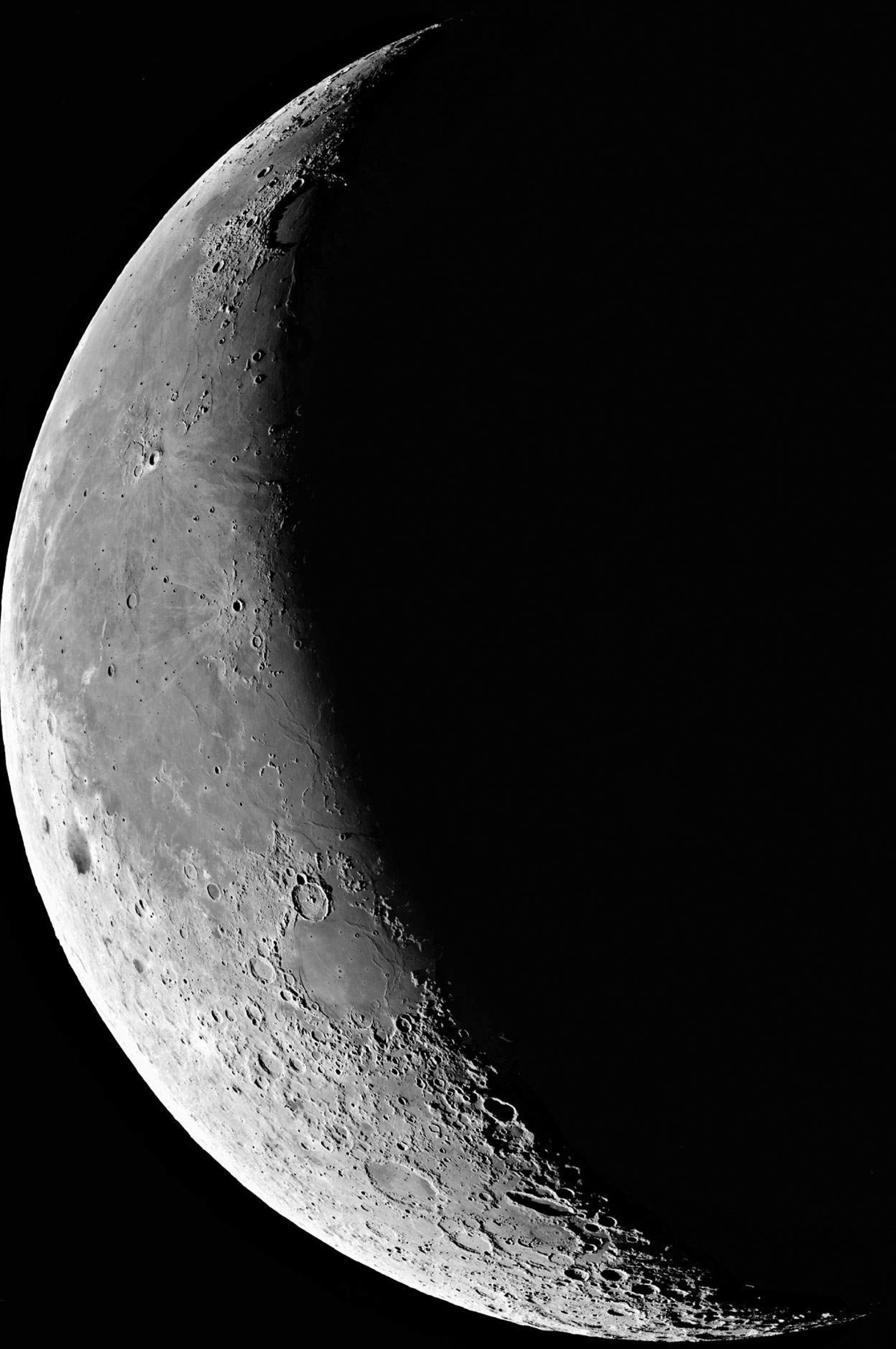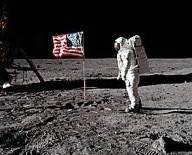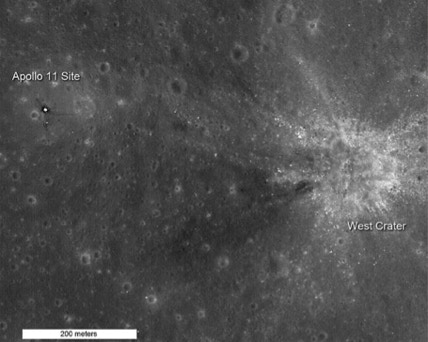

Exploring the Moon
A history of lunar discovery from the first
space probes to recent times
Exploring the Apollo landing sites – 1
When the last two astronauts left the Moon at the end of 1972, they probably thought that someone would be back a decade or so later to clear up after them. Half a century on, we are still waiting.
However, as a reminder of their exploits, we now have impressive images of the six Apollo landing sites from Moon-orbiting probes that have photographed the abandoned equipment just where the astronauts left it all those years ago. The Apollo lunar landing modules, electrically powered Moon cars, scientific equipment, oxygen backpacks, and even trails of scuffed-up Moon soil where the astronauts walked and drove on the surface – they all show up.
We owe most of these amazing new views to NASA’s Lunar Reconnaissance Orbiter (LRO). LRO took its first view of the Apollo 11 site, as well as four others, in July 2009, in time for the 40th anniversary of the first Moon landing. A month later, LRO returned for a closer look. This time, in addition to the lunar module it spotted equipment that had been put out on the surface by Aldrin such as the lunar ranging retro reflector (LRRR) and the passive seismic experiment (PSE) for detecting Moonquakes. A faint trail in the lunar dust marked Neil Armstrong’s path to a nearby crater called Little West to take pictures. LRO later descended for an even more detailed view.
LRO pictures of the Apollo 12 site show the tracks of astronauts Pete Conrad and Alan Bean as they walked from their lunar module Intrepid past small impact craters called Head, Bench, and Sharp, finally circling the rim of a shallow crater to the dormant Surveyor 3 which had landed two and a half years earlier. Other features visible on the LRO images include the Apollo Lunar Scientific Experiments Package (ALSEP).
Apollo 14 visited an area near the centre of the Moon called Fra Mauro. Astronauts Alan Shepard and Edgar Mitchell were meant to walk from their lunar module, Antares, to the rim of an impact feature called Cone Crater but it took them longer than expected. Unsure of their bearings, they took samples at a broken boulder nicknamed Saddle Rock before turning back. From the LRO pictures we can see they were only about 100 feet away from the rim of Cone Crater. If pictures this detailed had been available at the time, they could have pressed on and completed their climb.
At right of this LRO view is the rocky, football-field-sized crater that the
Apollo 11 lunar module flew over while seeking a safe landing site.
The crater is known as West crater. The Apollo 11 lunar module is the
bright dot to the left of this picture. Click photo for enlargement.
Exploring the Apollo landing sites 1
